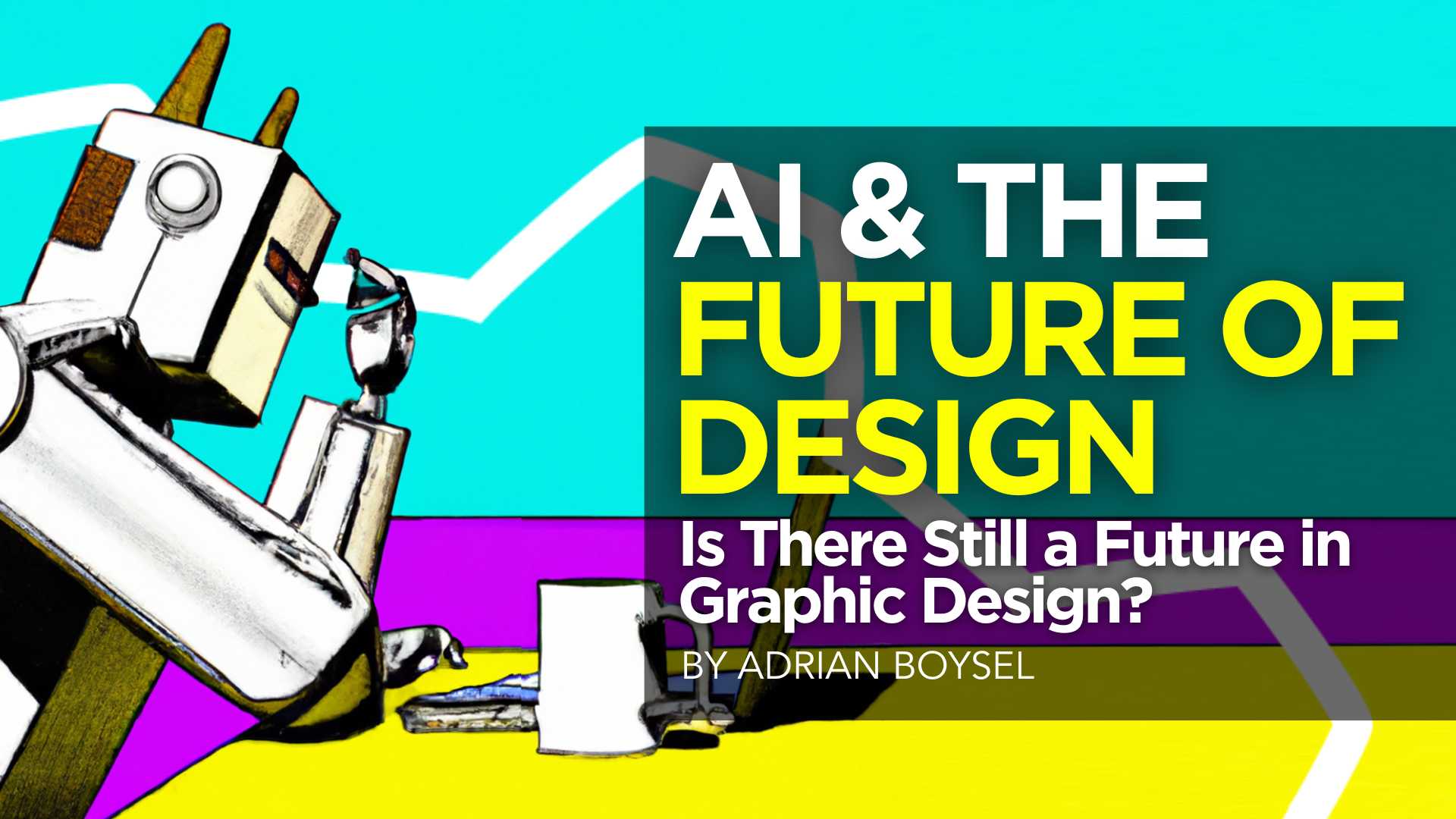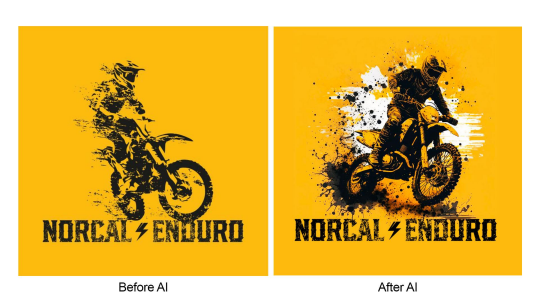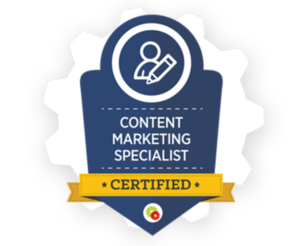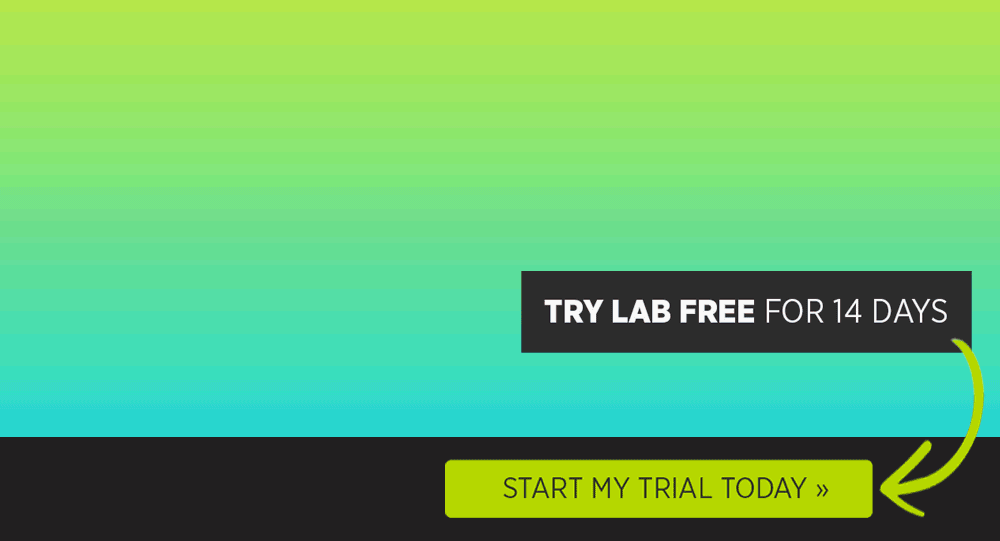MARKETING
AI and the Future of Design: Is There Still a Future in Graphic Design?

From $5 logo designs to websites like Canva to artificial intelligence is there still a future in graphic design?
Is Artificial Intelligence Taking Over the Design Industry?
Artificial Intelligence is rapidly changing the landscape of the design industry as we know it. Many creatives believe that it’s just the beginning of the end for designers, and that mindset of resistance to this technology will leave you in the dust if you are slow to adapt.
For over a decade stock websites have been giving creatives a shortcut to the creative process, eliminating hours and hours of creating basic design elements like photos, videos, and illustrations from scratch.
Yet you never hear anyone talking about how stock websites are ruining the design industry, so why is that?
The truth many of us hate to admit is that time is the most valuable thing that we possess as human beings; it’s a finite and limited resource that we can’t create more of.
Here’s a great example: Imagine if you had to create every font, photo, or illustration from scratch- would you charge your client more money and would the quality of your design improve?
The answer is clearly no, based on the fact that millions of dollars are being generated by creatives just in the stock graphics niche alone. So, why should AI be any different?
I’m not here to debate the morals and ethics of AI- I want to talk about facts and how we can use AI as a tool to streamline the design process, save ourselves time, and give our clients the best end result possible.
The people that adopt this technology first and use it properly will become “pioneers” in the design industry, using a technology that will only continue to grow and evolve in good and bad ways whether we like it or not.
Those of you who stay rooted in your limiting beliefs about AI being bad for the design industry will stay exactly where you are now or even worse, move backwards.
Like the famous quote by William S. Burroughs says “When you stop growing you start dying.” I’m not saying that it’s not going to be uncomfortable but change never is and you either adapt and evolve or you resist and regress.
Breaking the Time Barrier
When I started my career as a rookie graphic designer in 2005 we did not have stock graphics like we have access to now.
In fact, the only thing we did have was clip art and it was terrible! I was designing on MS paint because there was no way I was going to be able to afford an iMac. Everything I designed was from scratch and my idea of stock images was Google Images which at the time I had no clue was unethical.
It wasn’t until I learned about Photoshop, thanks to my brother, that I stopped using paint to design flyers and logos. I spent thousands of hours of my life downloading countless images from Google and photoshopping all types of designs and graphics, mostly for print, like business cards, flyers, and brochures.
I did it out of necessity because the image I had envisioned didn’t exist to just download so I had to create it.
I learned to essentially paint with images in photoshop which helped me dramatically when it came to learning how to design for the web. 17 years later and after 9 of those now using stock graphics I can tell you first hand that I would not have the financial success I have today without it. It’s made me hundreds of thousands of dollars and helped build a creative business that’s generated over 100 million dollars in revenue.
AI will be an exponentially larger opportunity, mark my words, and it will be a daily reality of life.
Ideas that come to your mind will come to life instantaneously and your creative flair will create things even better than what you imagined in seconds. One of the most valuable pieces I see is the speed of implementation of information.
Streamlining the design process will be about taking existing designs and making them better, faster.
If I want to create a line of t-shirts for my Motocross Brand and I creatine original design of a guy on a dirtbike shooting a rooster tail from the back tire, then I can upload that art to MidJourney and have 4 different and better designs in a matter of seconds with just the click of a mouse! Think of the hours saved!!!

From an Idea to Real World Application in Seconds
The speed of ideas being brought to life will be unlike anything we’ve ever seen, almost like thinking something into existence.
Be careful though, like Stock images the AI design tools will be just that, a tool, and if it is overused and abused, it will blend into the noise, and I promise you there will be more noise than ever.
If you’re only using Stock graphics in your designs and never using your creative flair or heart, then you will look and feel unoriginal and be overlooked.
I was recently on a phone call with a fellow creative Wes Frick, a renowned outdoor billboard advertising designer who’s been sharing some incredible AI art recently. I asked him what his take on AI was and he enthusiastically shared with me:
“AI art is a powerful tool that both clients and artists should use to formulate their ideas and bring them to life easily.”
In just a few minutes, while on the call, Wes made at least 16 different designs for me.
So let’s hypothesize here for a moment…
If I charge a flat rate of $250 for a design, let’s say it’s a t-shirt design, and the client wants 12 designs, that project would typically take a minimum of 2-4 hours of my time. So, at the bare minimum that’s 12 hours of work for $3k. If you divide that per hour that’s $125 hour minimum. Not bad right?
Now let’s say I use an AI design tool like Midjourney. I can make just one unique design and get 12 unique images that are just as good, in under 10 seconds. How much does that now make you per hour? Could you lower your prices, reduce turnaround time, or improve profitability?
The good news is you can do both if you use AI technology as a tool- it now becomes a win-win win for everyone.
At the end of the day the most valuable thing to the client is that the design problem they have is being solved at the highest level and quality possible, regardless if it was designed with AI or without it.
A Question Well Asked is a Problem Half Solved
How you communicate your vision to AI design tools is the skill you will need to improve on. The better the question you ask- the better the answer (design) these tools will return. If you ask for a banana this tool will just create a basic image of a banana by itself.
If you ask it to make a large green banana on a sunny tropical beach that’s in the hand of a monkey who is handing it to his monkey girlfriend that looks like an oil painting from the 1920’s that’s exactly what it will give you.

The biggest limitation to the design is in how you communicate it to the tool you are using. This will be the creative flair needed to make something truly unique and memorable.
The biggest limitation to the design is in how you communicate it to the tool you are using. This will be the creative flair needed to make something truly unique and memorable.
The other part that is so unique is that it learns as you go along, taking information from your previous questions and solving the problem even better each time.
As you get your first design back you will notice things that you wish you would have added or that are missing entirely and you will be able to make iterations to that design simply by rewording or better communicating what it is that you want.
It’s this continued clarity of vision that will power the growth engine for AI. As it produces more it learns more, and that puts us in the driver’s seat for how this technology can be used to improve the creative process. You will have to identify the problem, diagnose it, then be able to effectively communicate the solution you are looking for to the AI in order for it to solve the problem.

Want to get certified in Content Marketing?
Leverage the tools and channels to predictably and profitably drive awareness, leads, sales, and referrals—EVERYTHING you need to know to become a true master of digital marketing. Click Here
AI Will Replace Some Designers
Yes, people will lose their jobs to AI. Companies will cut their expenses and implement cost effective tools to save themselves money.
In my opinion this is going to shine a light on the designers that have been hiding in the shadows who were in it for the wrong reasons. Essentially shaking out the loose hands and exposing the people who are doing it for just the money instead of creative impact.
I believe it will reward the truly passionate designers that love creating the best design possible for their clients, regardless of the tools that are being used to do it. Their initial investment into the creative process will become better and the designs will stand out from everyone else.
Ever heard of a “Happy Accident” this is what I refer to as Creative Flair. Some of my favorite designs came to life from me accidentally hitting the wrong key on my keyboard, and altering my design in a way that actually makes it look better unintentionally. AI can’t replicate human creativity and flawed nature, it runs on rules!
Communication is everything when it comes to AI.
In order to connect with people we have to possess empathy. To be a great communicator you need to understand human psychology, emotions, and culture.
An AI can’t have a heart to converse, be vulnerable, or understand what it’s like to grow up in a broken home experiencing trauma, and hurts that influence the way you think about life or how we make decisions.
The only people that will be replaced are the ones that dig their feet in and bury their heads in the sand as this becomes more of a way of life and business. They will pass up on opportunities, and opportunities won’t even come their way because of their close mindedness.
All for what, our ego, or some “greater good” virtue we let ourselves believe is more important than us having success?
AI Will Help Good Designers Become Great Designers
The people that will benefit the most from this unstoppable force that is AI are those who go all in, learn the platforms, and implement it in a way that is most authentic to their wants and needs.
Designers will spend more time making their main designs better so they can produce multiple unique designs that are just as good as the original or better and that will be hard to compete with!
Creative flair, out of the box thinking, problem solving, and communication skills are going to become more valuable than ever. I believe that this will push us to be more innovative, and break the rules of what we think good design looks like in all disciplines.
My advice to you: Focus on stacking skills that will improve your creativity, help build stronger relationships, become a better problem solver, and become your best and most authentic you possible.
Key Takeaways from The Future of Design
Up to this point the design industry has seen countless changes, websites like fiverr have made the design industry and many industries for that matter more competitive, AI will be yet another innovation that challenges and changes the landscape of graphic design in various ways.
Designers will need to become more creative, and learn better problem solving skills by asking better and better questions.
If you overuse, get lazy, and don’t use ai properly you will blend into the noise of everyone else trying to make a quick buck. This is your chance to do your best work ever and then use AI to enhance your art beyond what you thought was possible.
Lastly, it’s unavoidable that AI will become mainstream in design and people that resist it will regret it. Ai will only be used more frequently as time goes on and it will be a part of our daily life as designers in the future..


![How AEO Will Impact Your Business's Google Visibility in 2026 Why Your Small Business’s Google Visibility in 2026 Depends on AEO [Webinar]](https://articles.entireweb.com/wp-content/uploads/2026/01/How-AEO-Will-Impact-Your-Businesss-Google-Visibility-in-2026-400x240.png)
![How AEO Will Impact Your Business's Google Visibility in 2026 Why Your Small Business’s Google Visibility in 2026 Depends on AEO [Webinar]](https://articles.entireweb.com/wp-content/uploads/2026/01/How-AEO-Will-Impact-Your-Businesss-Google-Visibility-in-2026-80x80.png)
















You must be logged in to post a comment Login